How to Protect Plants from Frosts (And How to Cover Plants for Frost)
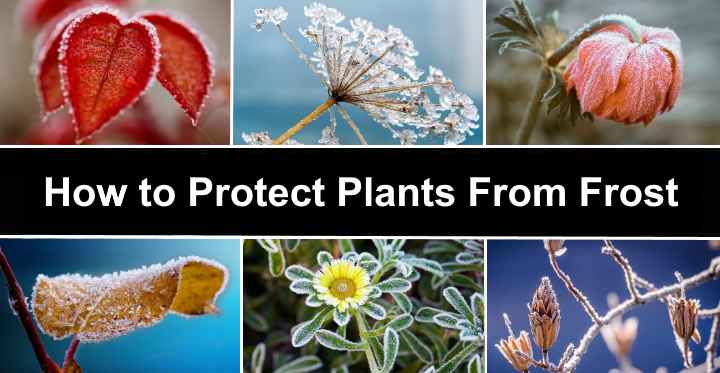
Protecting plants from frost in early spring and late fall is vital for all gardeners. An unexpected freeze can kill tender seedlings, damage roots, and ruin plant foliage. Even when you expect temperatures to drop significantly, being prepared to protect plants from freezing conditions will help save your plants from the ravages of cold weather.
Frost protection for plants is usually necessary from late evening until early morning in early spring. Warm sunny spring days can suddenly drop below 32°F (0°C) when the sun goes down. Also, a sudden change in fall weather can cause a hard frost on the ground. And with changing weather patterns, surprise frosts when you don’t expect them are becoming more common.
Sometimes a simple frost cover for plants is enough to protect tender growth. Other types of protective plant cover include cloches, mulch, blankets, or special frost covers for plants. For many potted plants, bringing them indoors is the only way to protect the plants from frost.
This article is a complete guide to protecting your vegetables, flowers, seedlings, fruit trees, and shrubs from frost damage. In addition to practical ways to protect gardens from frost, you’ll find out about the best frost covers for plants.
What Is Frost?

A close up picture of a flower covered in a thin layer of ice
Frost is a thin layer of ice crystals that occur when water vapor in the air forms as ice on freezing surfaces near the ground. In plants, frost damage occurs when low temperatures cause water in plant cells to freeze. Frost-damage in plants looks like they have limp, black, and shriveled leaves.
Surface frost looks like a thin dusting of fine sugar on the ground and plant surfaces.
Typically, frost occurs when the ground temperature is at the freezing point – 32°F (0°C). Because the sun generally warms the ground, frost typically happens at night. Frost can destroy many plants, and severe hard frosts can cause root vegetables to freeze in the ground.
Knowing how frost develops is key to protecting your plants from freezing conditions. For example, simple frost covers protect many plants because they don’t allow water vapor to fall on foliage. Therefore, frost doesn’t form on plant leaves, and your plants are protected. Also, covers act as an insulator, keeping the ground just above the freezing point when frost occurs.
At What Temperature Do Plants Freeze?
Typically, most plants freeze when the air temperature drops below 28°F (-2°C) for at least five hours. However, freezing conditions affect plants differently. Some tender annuals and seedlings suffer frost damage when temperatures drop to 32°F (0°C). But there are cold-hardy vegetables and plants can survive when temperatures fall to 18°F (-7.7°C).
Related reading: The best winter vegetables to grow in your garden.
To know what temperatures individual plants and vegetables freeze at, check the plant’s hardiness zone. For example, plants that are cold hardy in zones 4 through 7 can survive in temperatures between -20°F and 0°F (-34°C – -12°C). Plants hardy in zones 8 through 11 generally don’t survive extreme cold and need protection from frost.
When to Expect Frost
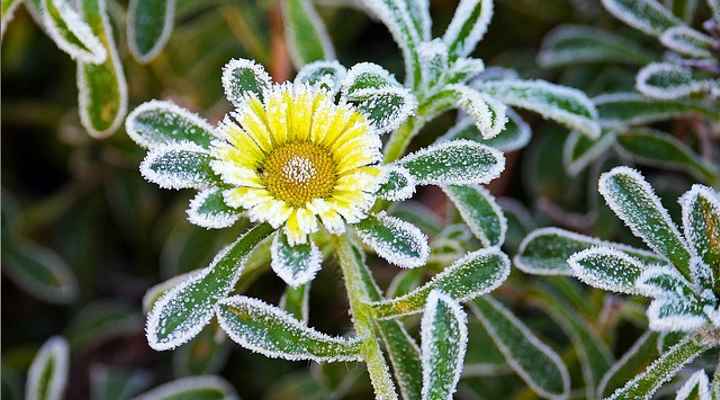
Ideal conditions for frost formation are cold temperatures at night, clear sky and low wind
Frost usually occurs when the air temperature is below 32°F (0°C), there are clear skies, and wind speed is lower than 10 mph (4 m/s). Cold, calm conditions and a lack of cloud cover are the ideal climatic conditions for frost to develop.
To know when frost is expected in your area, it’s vital to pay attention to weather forecasts. The National Weather Service provides advisories when frost is imminently expected.
A Frost Advisory is issued during the growing season when minimum temperatures are between 33°F and 36°F (0.5°C – 2°C), and there are clear calm nights.
A Freeze Watch means that you can expect minimum temperatures below 32°F (0°C) during the next day or two.
A Freeze Warning is issued from the fall until the end of the growing season if widespread freezing temperatures are expected.
A Hard Freeze Warning occurs when temperatures are expected to dip below 28°F (-2°C) for an extended time.
How to Protect Plants from Freezing
When there is a frost advisory warning, protect plants from freezing by covering them with blankets or sheets to insulate them. Then, you can place a plastic cover on top to prevent heat from escaping. But it’s crucial to remember to remove the covers in the morning. Otherwise, condensation builds up, increasing the risk of freezing the following night.
If there is a hard freeze warning, you will have to protect the plant’s roots with heavy mulching. Pile up hay or wood mulch over the roots to shield the soil from the icy-cold weather. Additionally, every evening, you can place mason jars filled with warm water in the mulch to increase the temperature.
During a hard freeze, protect plants from extreme cold by creating a burlap fence around your shrubs or vegetables. Fill the fenced section with hay, place jugs of warm water inside, and cover the top with burlap. Remove the protection during warm days or when the freeze has passed.
How to Protect Flowers from Frost
To prepare for spring and fall, be ready to protect flowers from frost with everyday household items. For example, bed linen helps insulate flowers and protect them from contact with cold air. Or why not use an upturned cardboard box to put over tender flowers? You can also cover plants with a bucket or flower pot for frost protection.
While you can buy frost blankets for plants, you might have items in your home to use as DIY frost covers.
Wrapping Trees for Winter
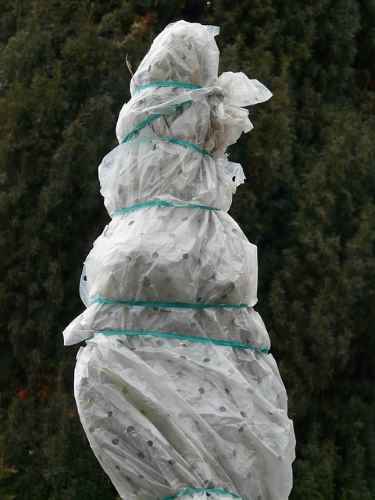
Wrap young trees for frost protection
Wrapping young trees is an effective way to prevent frost and ice damage on thin bark and avoid winter sun damage. The protective wrap around the trunk and branches also stops deer from eating your trees.
Use strips of a breathable material such as burlap to wrap around the tree trunk and lower branches loosely. This can help to guard young trees against winter and early spring frost damage.
If sun scald is an issue, wrap the tree trunk with reflective white guards to stop the warm daytime sun from warming the tree too much.
How to Cover Plants for Frost
Covering plants is one of the best ways to protect them from a frosty chill. Have suitable frost covers on hand to cover plants in the case of a surprise frost. Other types of suitable DIY plant covers include sheets, cardboard boxes, buckets, drapes, and towels. Just ensure to secure the plant coverings with stakes or rocks, so they don’t blow away.
If you use a plastic cover for frost protection, ensure that it never touches the plant foliage.
The Best Frost Covers for Plants
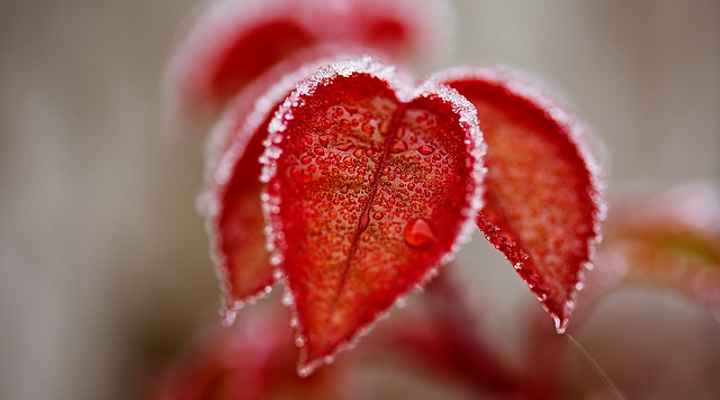
You can use everyday items as DIY frost protection for plants
Covering plants to guard against frost doesn’t require anything elaborate. The goal of a plant frost cover is to stop air vapor from settling on the ground or foliage when it’s near freezing temperature. There are many everyday items you can use as DIY frost protection for plants.
Here are a few of the best ways to cover plants during a severe chill in early spring or late fall.
Frost cloths are an excellent choice for protection from bitter coldness. Commercial frost row covers are made of polypropylene material that allows moisture in but doesn’t let heat escape. You will have to use stakes or frames to keep the plastic covering off plants.
Bedsheets are a simple DIY option to cover plants during frosty conditions. Just drape the bed linen over your plant and secure it with bricks to protect tender plants from frost. Depending on the amount of frost you expect, you could also use a warm blanket.
Upturned buckets are an easy way to give young plants protection when a frost advisory has been issued. Put inverted buckets over your plants and place a heavy object to secure them in place. Flower pots work just as well to cover plants during a brief icy-cold spell.
Plastic bottles with the bottom cut off can act as cloches to cover individual plants from frost. After cutting off the bottom, place them in the soil over each plant.
With these frost covers, it’s vital to remember that you should remove them during the day and put them back at dusk. New, tender plants need the warmth energy from spring sunshine to grow.
How to Protect Plants from Frost
In most temperate climates, frost protection for plants is necessary in late winter and early spring. Besides covering plants, what else can you do to shield plants from frost and a surprise freeze? Here are some handy tips.
Water Soil in the Afternoon Before Frost to Protect Plants from Freezing
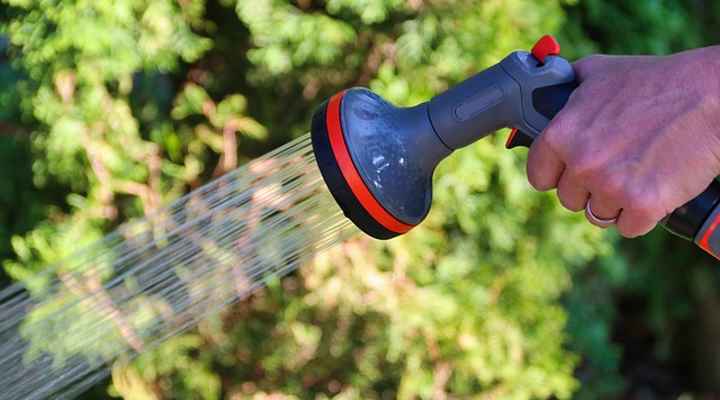
Watering the ground in the afternoon helps to protect plants from frost
Keeping the ground moist in early spring provides excellent protection from frost. Remember, a light frost doesn’t permeate the soil—so the water won’t freeze. And moist soil radiates heat when the sun goes down. So, it’s a good idea to keep your garden well-watered if you expect a nighttime chill.
To protect plants from frost, water the ground in the afternoon, when the temperatures are their warmest. Even if you decide to cover plants for protection, the moist soil creates a warm environment for plants to grow despite the frost.
Add a Thick Layer of Mulch to Protect the Ground and Plants from Frost
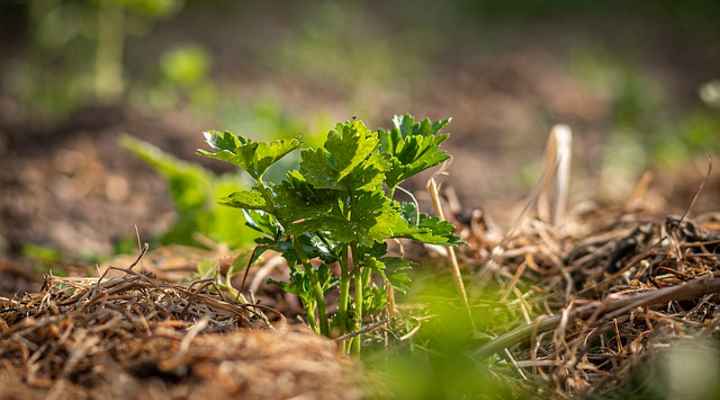
Protect plants from freezing using a thick layer of mulch
Mulch adds a layer of protection for plants if you expect a brief frost in early spring. Mulching around tender plants insulates the ground and prevents sudden temperature changes. Suitable mulch for frost protection includes hay, wood chips, shredded bark, leaves, and evergreen branches.
In fact, heavy mulching can stop the roots of some perennials from dying due to a hard freeze in winter.
There are a few things to know about mulching to ensure it’s useful as a frost blanket for plants. First, leave an inch or two around the plant’s central stalk. This allows some heat to escape from the soil. Second, remove most of the mulch when the risk of frost has passed.
Remember that mulch is a useful gardening method throughout the year to retain soil moisture and control weeds.
Bring Potted Plants Inside to Protect Them from Frost
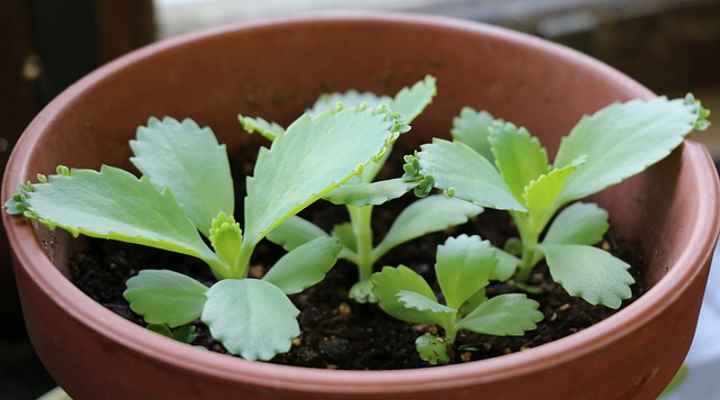
Bring tender potted plants indoors for frost protection
If you grow tender perennials in pots, bring them indoors to prevent icy chills from damaging the foliage and roots. Putting potted plants in a garage, shed, or other similar building can safeguard against frost damage. If you have warm spring days, you can return the pots to your patio, backyard, or deck area.
There are a few things to remember about bringing container plants indoors for frost protection. First, don’t bring the plants into warm rooms as the sudden temperature change can stress them. Second, tender potted plants are more susceptible to frost as they don’t benefit from insulating garden soil.
Grow Plants in Frost-Resistant Locations
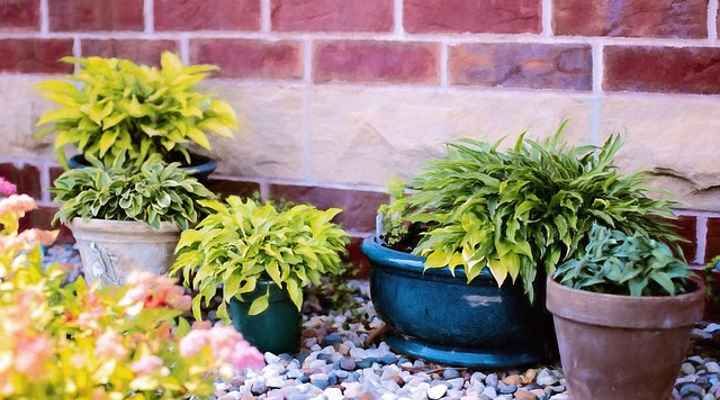
Placing potted plants near walls or on elevated location helps to protect them from frost
Did you know that certain places in your garden are less susceptible to frost? Frost tends to form on surfaces at ground level. So, keeping plants well-elevated above the ground can help avoid frost injury. This is true if you are growing seedlings or have tender potted plants.
You can also place potted plants or hanging baskets near walls on west- or south-facing buildings. During the day, the building absorbs heat and then emits it at night—thus, keeping your plants warmer.
However, it is good to remember that this method is only best for an unexpected, short cold snap.
Grow Cold-Hardy Plants That are Frost Resistant
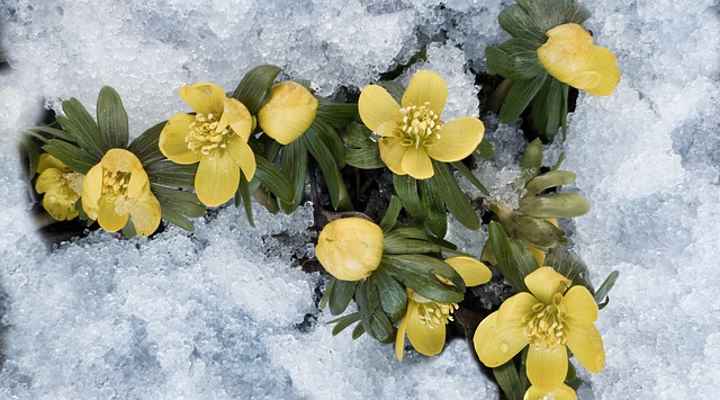
Winter aconite is a cold hardy flower that withstands hard frost
There are plenty of flowers, shrubs, and vegetables that grow despite hard frosts and frigid temperatures. You can also find cold-hardy cultivars that have been specially developed to withstand icy-cold weather and snow. Some hardy flowering perennials die back to the ground in winter. But frost doesn’t affect their roots, and healthy growth returns in spring.
Some of the best flowers for winter include:
- Winter pansies (Viola hiemalis)
- Winter aconite (Eranthis hyemalis)
- Camellia (Camellia japonica)
- Flowering Winter Heath (Erica × darleyensis)
- Clematis (Clematis cirrhosa)
- Snow Crocus (Crocus chrysanthus)
Wrap Trees to Protect Them from Freezing Temperatures
Wrapping young trees with reflective wraps or burlap can help them survive cold winter and frost in spring. Putting wrap around trees is vital for fruit trees as they typically have thin bark that is easily damaged by frost. Loosely tie wrapping around the trunk from the ground to the first branches.
Cover Plants to Protect Them from Frost
If you hear a frost advisory warning, then get plant covers prepared. When the temperature drops to 32°F or 33°F (0°C – 0.5°C), securely cover plant rows, shrubs, or plants with bed linen, blankets, burlap, or mulch. For added insulation, put a layer of plastic on top.
How to Protect Succulents from Frost

Bring tender potted succulents indoors to protect them from frost
Whether you need to protect succulents from frost depends on the type of plant. Some succulent varieties such as Hens and Chicks (Sempervivum) and Stonecrop (Sedum) are cold-hardy to zone 5. In fact, many desert plants survive well on hot sunny days and freezing nighttime temperatures.
If you have tender succulents, it’s best to grow them in pots outdoors during summer. This lets you place them in a sheltered, indoor location if there’s a risk of frost, ice, or snow.
What to Do After the Risk of Frost has Passed?
When the risk of any sudden cold snap has passed in spring, it’s time to get busy in the spring garden. If you have been growing seedlings indoors, you can now transfer them to your flower beds or vegetable patch. You can also prune shrubs and bushes to encourage healthy growth and plenty of blooms.
But it’s still a good idea to keep plant covers on hand in case of emergency. Spring weather can change quickly, and it’s easy to be caught out by a surprise frost.
Related articles:
- The Best Fall Crops to Grow in Fall Vegetable Garden
- Outdoor Winter Plants to Grow in The Garden or in Pots
- The Best Winter Flowering Plants
